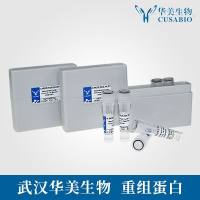Inducible shRNA Lentiviral Vectors
互联网
实验原理
实验步骤
1. Performing the LR Recombination Reaction
1) Add the following components to 0.5 ml microcentrifuge tubes at room temperature and mix.
2) Remove the LR Clonase™ II enzyme mix from -20° C and thaw on ice (~ 2 minutes).
3) Vortex the LR Clonase™ II enzyme mix briefly twice (2 seconds each time).
4) To the sample above, add 2 µl of LR Clonase™ II enzyme mix. Mix well by pipetting up and down.
Reminder: Return LR Clonase™ II enzyme mix to -20° C immediately after use.
5) Incubate the reaction at 25° C for 1 hour.
Note: Extending the incubation time to 18 hours typically yields more colonies.
6) Add 1 µl of the Proteinase K solution to each reaction. Incubate for 10 minutes at 37° C.
7) Proceed to Transforming One Shot® Stbl3™ Competent E. coli
Note: You may store the LR reaction at -20° C for up to 1 week before transformation, if desired.
2. Transforming One Shot® Stbl3™ Competent E. coli
1) Thaw, on ice, one vial of One Shot® Stbl3™ chemically competent cells for each transformation.
3) Incubate the vial(s) on ice for 30 minutes.
4) Heat-shock the cells for 45 seconds at 42 °C without shaking.
5) Remove the vial(s) from the 42 °C water bath and place them on ice for 2 minutes.
6) Add 250 µl of pre-warmed S.O.C. Medium to each vial.
3. Producing Lentivirus in 293FT Cells
1) Grow the 293FT Cells to obtain 6 x 106 293FT cells for each sample.
2) Prepare plasmid DNA of your expression clone.
4) Harvest virus-containing supernatants 48-72 hours post-transfection.
4. Titering Your Lentiviral Stock
Example: When using HT1080 cells, we usually plate 2 x 105 cells/well in a 6-well plate.
Note: You may prepare a wider range of serial dilutions (10-2 to 10-8), if desired.
8) Using a flow cytometry system, determine the percentage of GFP-positive cells for each dilution.
10) Replace medium with fresh medium containing Blasticidin every 3-4 days.
13) Remove the crystal violet stain and wash the cells with PBS. Repeat wash.
14) Count the blue-stained colonies and determine your lentiviral stock titer.








